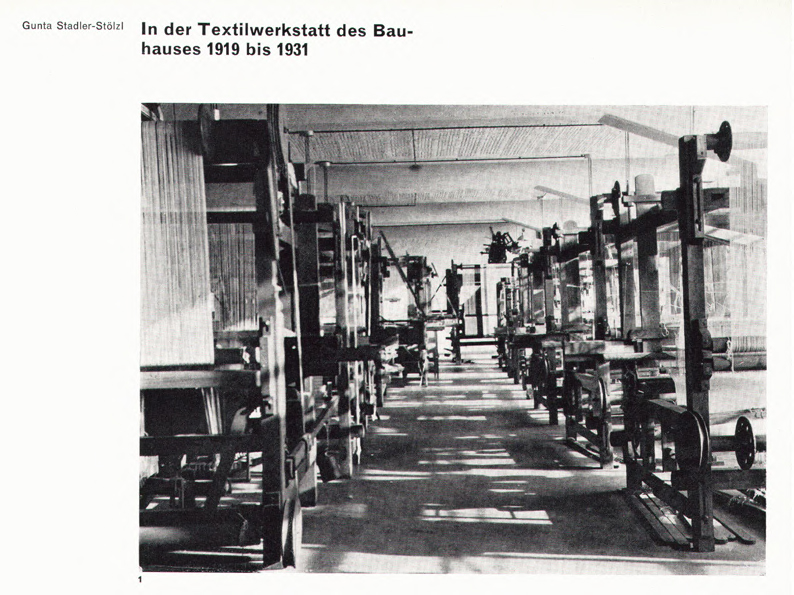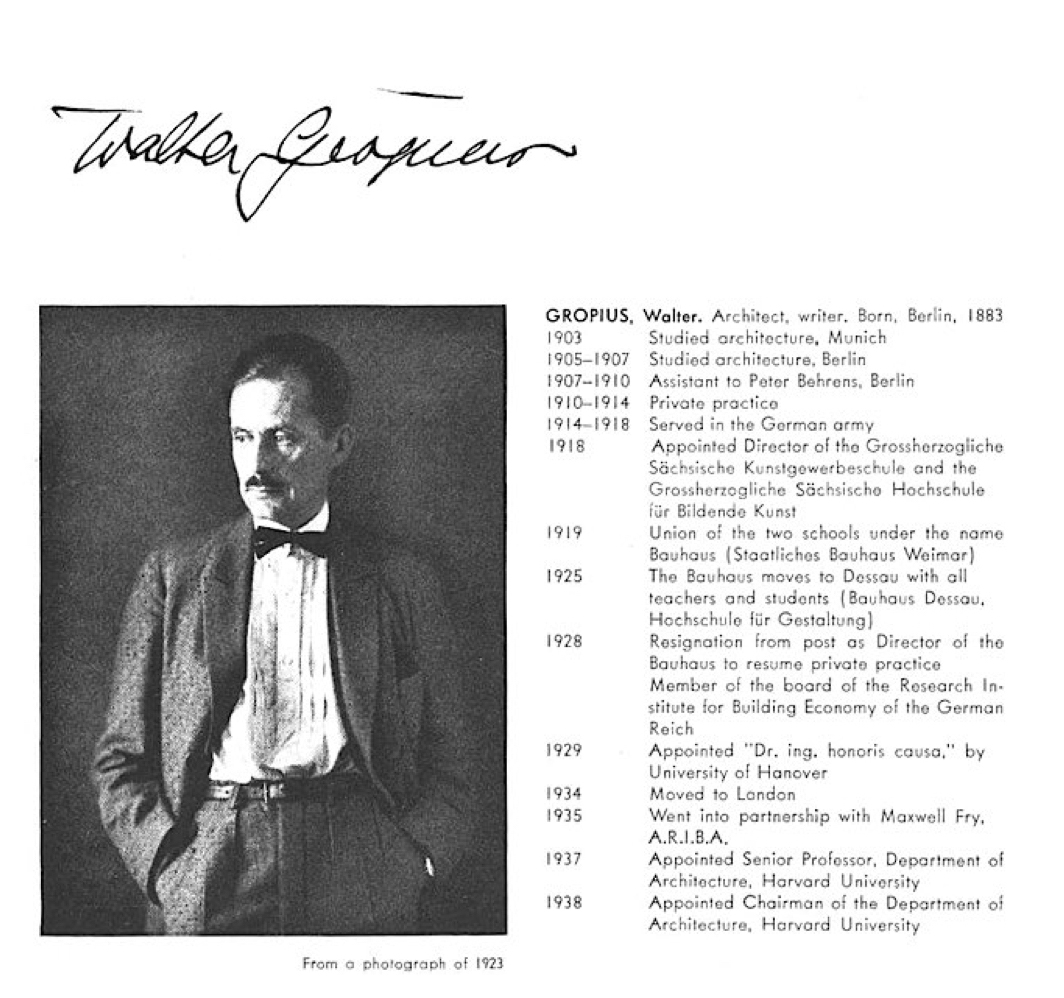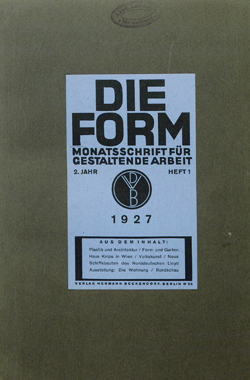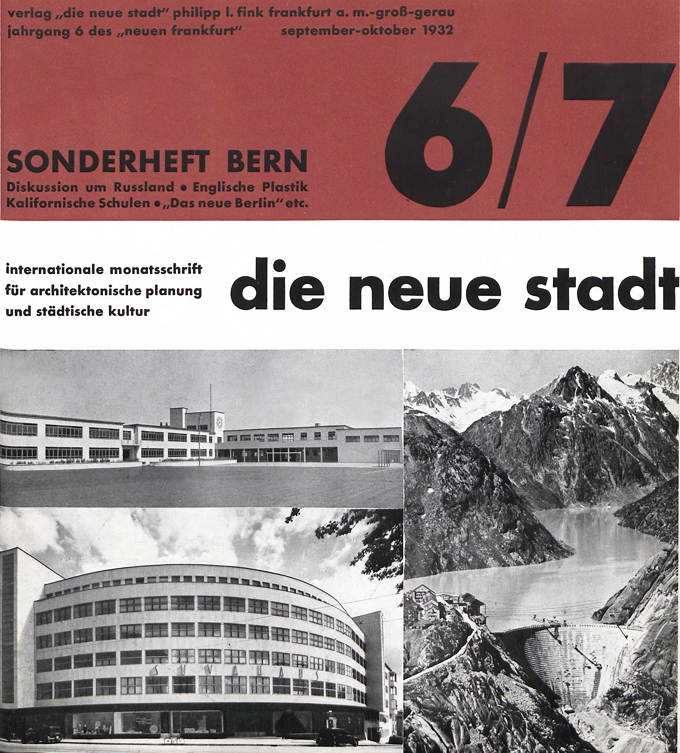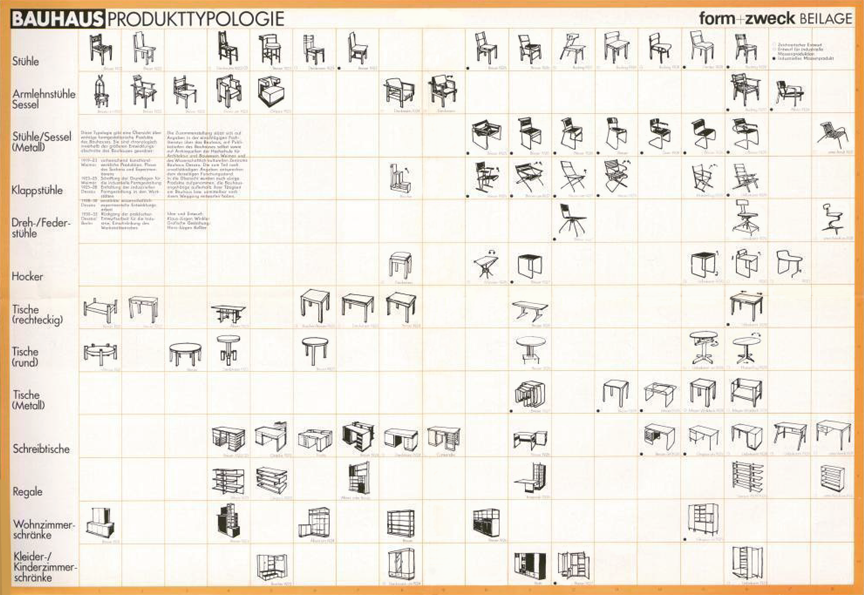my modest contribution to #bauhaus100 and beyond: the original bauhaus books and journals in a virtual bookcase - with the possibility to download and take a closer look at the media, supplemented by excerpts and contributions by bauhaus people and contemporary witnesses or other content in context.
andrea riegel wishes you pleasant reading
PAUL KLEE
MoMA NY 1938: BAUHAUS 1919-1928
BAUHAUS JOURNAL 1926–1931

Today I presented my first lecture, and the extraordinary case occurred that I spoke to the people for two hours off. Klee to his wife Lily, 1921
”
meister
Pictorial Formation
Notes from the lessons in Weimar
BAUHAUS BOOKS
1925–1930
THE BAUHAUS BOOKS 1924–1930


TISCHLEREI
Formmeister:
W. Gropius
Technischer Meister:
R. Weidensee
GLASMALEREI
Formmeister:
Paul Klee
Werkstattleitung: Josef Albers
METALL-WERKSTATT
Formmeister:
L. Moholy-Nagy
Technischer Meister: Christian Dell
die bauhausbücher 1925–1930
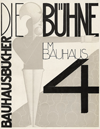
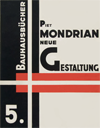
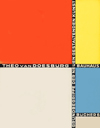
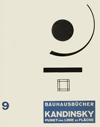
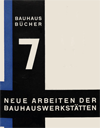
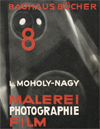

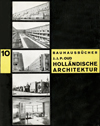

The Bauhaus has become known and effective above all as the nucleus of what is now called »design«. Walter Gropius, however, aimed much more with his art school founded in Weimar in 1919. The underlying concept of a comprehensive aesthetic education aimed to abolish the hierarchy between »high« and »low« arts and to reunite the various genres in the »building«. The students were to be trained both artistically and in craftsmanship. The Bauhaus thus placed itself in the romantic tradition of the Gesamtkunstidee, which sought to restore the old unity of craft, technical and artistic production lost through industrialisation, which had once been taken for granted in the medieval cathedral and baroque palace architecture. But why were the first Bauhaus teachers not architects and craftsmen, but painters? Regine Prange, 2001.
From Art History Worksheets of the Johann Christian Senckenberg University Library. Source: University of Frankfurt
”
Das Bauhaus ist vor allem als Keimzelle des heute »Design« genannten Produktbereichs bekannt und wirksam geworden. Walter Gropius strebte mit seiner 1919 in Weimar gegründeten Kunstschule jedoch weit mehr an. Das ihr zugrunde gelegte Konzept einer umfassenden ästhetischen Erziehung zielte darauf, die Hierarchie zwischen »hohen« und »niederen« Künsten abzuschaffen und auch die verschiedenen Gattungen im »Bau« wieder zur Einheit zu führen. Die Studierenden sollten sowohl künstlerisch als auch handwerklich ausgebildet werden. Damit stellte sich das Bauhaus in die romantische Tradition der Gesamtkunstidee, die jene alte, durch die Industrialisierung verloren gegangene Einheit der handwerklich-technischen und künstlerischen Produktion wiederherzustellen suchte, welche im mittelalterlichen Dom- und barocken Schlossbau einst selbstverständlich gewesen war. Warum aber waren die ersten Bauhauslehrer nicht Architekten und Kunsthandwerker, sondern Maler? Regine Prange, 2001
Aus Kunsthistorische Arbeitsblätter der Universitätsbibliothek Johann Christian Senckenberg. Quelle: Universität Frankfurt
”
Das Bauhaus war eine Schule. Zahlreiche Autoren, nachdem sie diese Tatsache erwähnt haben, neigen dann dazu, sie zu vergessen. Wenn so viele Bäume gezählt werden, verschwindet der Wald. Man redet endlos über die Menschen, ihre Werke, ihre Vorfahren und Nachkommen, man zeigt das unvermeidliche konzentrische Schema des Studienganges, aber man ist sehr diskret über die Institution. [...] Es sieht so aus, als ob man sich sträuben würde, die gemeinen und unwichtigen Details des Lebens einer Lehranstalt wahrhaben zu wollen. Diese Verhalten bestärkt die Idee, dass es im Bauhaus ein Stück Wunder gäbe.
Der Schweizer Architekt und Max Bill-Schüler Claude Schnaidt (1931–2007), zum 1. Bauhaus-Kolloquium in Weimar, 1976.
PAUL KLEE
I premise that no one discovered the fish of Columbus
Paul Klee: Bildnerische Formlehre, ZPK Bern
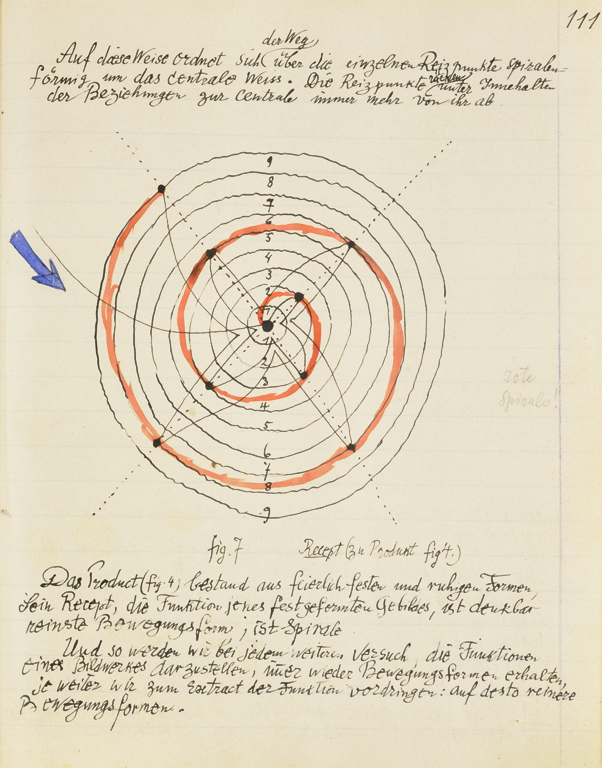
Paul Klee, Pictorial Formation, the moving form
Heute hielt ich mein erstes Kolleg, und es ereignete sich der ausserordentliche Fall, dass ich zwei Stunden frei mit den Leuten sprach. Klee an seine Frau Lily, 1921
bildnerische formlehre
notizen aus dem unterricht in weimar
ich schicke voraus
dass niemand den Fisch des Columbus entdeckte
Paul Klee – Bildnerische Formlehre
Pictorial Creation: I.2 Principielle Ordnung, BG I.2/157. Zentrum Paul Klee Bern
Lecture cycles from Weimar, Nov. 1921 (winter semester) to the end of 1922. Source: Zentrum Paul Klee Bern
”
It’s unforgettable how he explained a complicated subject on the blackboard such as polyphony, which he described as a simultaneous, multi-dimensional phenomenon; in each hand a chalk of a different colour, drawing and writing with both hands.
Helene Schmidt-Nonné
Paul Klee – Bildnerische Gestaltungslehre,
»four-sided polyphony« BG I.4/129. Source: ZPK Bern
Paul Klee – Pictorial Creation, I.4 Structure. Zentrum Paul Klee Bern
”
”
STAATLICHES BAUHAUS IN WEIMAR 1919–1923
The »Bauhaus Week« in 1923 provided the setting for the launch of the first public Bauhaus exhibition, which was, however, put on by the State Assembly of Thuringia and against the will of the director Walter Gropius. The motto was »Art and Technology - a new unity«, the particular focus was on architecture. The works of the workshops were shown in the academy and in the experimental single family home »Haus am Horn«. Lectures and musical events accompanied the exhibition. Hindemith, Busoni, Weill and Stravinsky were present and performed their works. The audience also experienced Oskar Schlemmer's »Triadisches Ballett« at the National Theatre in Weimar. The guests came from near and far, the popularity was great, but so was the criticism from reactionary circles.
Issued on the occaison: the first book published by the Bauhaus. Cover design Herbert Bayer, 1923, printed after drawn script, 25 x 25.5cm. Source: SLUB Dresden
erinnerungen
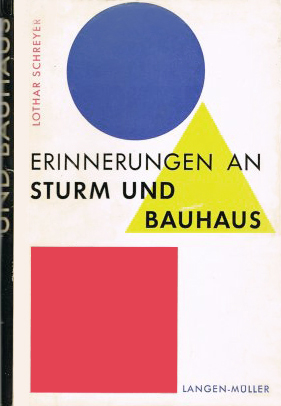
Was ist des Menschen Bild? Lothar Schreyer, der als Meister zwischen 1921 und 1923 am Bauhaus Weimar lehrte, blickt in seiner Retrospektive auf »Sturm« (die Berliner Galerie von Herwarth Walden) und das Bauhaus. Der Download umfasst die Kapitel über Gropius (Das Menschenhaus), Klee (In der Zauberküche) und Kandinsky (Die Ikone).
Unvergesslich ist es, wie er ein kompliziertes Thema wie das der Polyphonie, die er als simultanes, mehrdimensionales Phänomen bezeichnete, an der Wandtafel erläuterte; in jeder Hand eine andersfarbige Kreide, mit beiden Händen sicher zeichnend und schreibend.
Helene Nonné-Schmidt
Paul Klee – Bildnerische Gestaltungslehre, I.2 Pricipielle Ordnung. Quelle: Zentrum Paul Klee Bern
WOMEN AT THE BAUHAUS
GUNTA STÖLZL
In retrospect, Gunta Stölzl (1897–1983) describes the humble beginnings at the Bauhaus in Weimar, the founding of the women's class, the establishment of the weaving workshop and the new industrial aspect in Dessau.
Weimar, fall of 1919. What did I find? A small group of students, more men than women. A large building with studios, some of which were occupied by the old academy, next to it large empty rooms, a workshop building, a canteen, a studio house for students, but only for men. Finding a room was not difficult. But where could one work? Which craft did you feel attracted to?
”
WALTER GROPIUS ISE GROPIUS
WALTER GROPIUS ISE GROPIUS
Biographie aus dem Ausstellungskatalog Bauhaus 1919–1928, MoMA New York, 1938
Weimar, Herbst 1919. Was fand ich vor? Eine kleine Gruppe von Studierenden, mehr Männer als Mädchen. Ein großes Gebäude mit Ateliers, die zum Teil von der alten Akademie belegt waren, daneben große leere Räume, ein Werkstatt-gebäude, eine Kantine, ein Atelierhaus für Studierende, jedoch nur für Männer. Zimmersuche war nicht schwer. Wo aber konnte man arbeiten? Zu welchem Handwerk fühlte man sich hingezogen?
Quelle: Das Werk: Architektur und Kunst = L'oeuvre : architecture et art, 1968.
Im Rückblick beschreibt Gunta Stadler-Stölzl die Anfänge am Bauhaus in Weimar, die Gründung der Frauenklasse, den Aufbau der Weberei und das industrielle Arbeiten am Bauhaus Dessau. Lesenswert.
WOMEN AT THE BAUHAUS
GUNTA STÖLZL
3900 lose Manuskriptseiten, Klee ordnete sie wohl 1928. Quelle: Zentrum Paul Klee

BAUHAUS JOURNAL 1926–1931
chronik
neubau neuanfang dessau

die bauhauszeitschriften
wohnungsbau
dessau-törten
stahlhausbau
petersschule
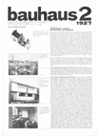
fokus bühne
schlemmer
propaganda
theater total
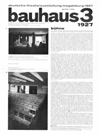
weißenhof
möbel
meyer
völkerbundpalast
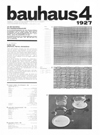

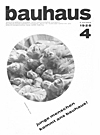
doppelnummer
albers
interviews
meyer
anbiet-arbeit
fotografie typografie
kleinwohnung
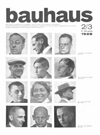

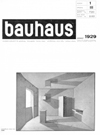
gesellschaft materialismus
bauen + leben
bach-fuge
architektur
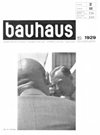
kleinwohnung filmrhythmus
malerei + film
handwerk
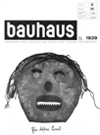
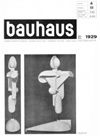
wohnungsbau
josef albers
typografie
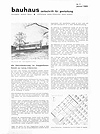
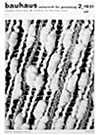
paul klee
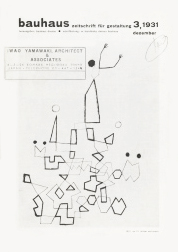
gunta stölzl

die bauhaus lehre
gropius, moholy-nagy
meyer, kállai
hilberseimer, albers, kandinsky
FROM GROPIUS TO MEYER 1928
I intend to leave my previous sphere of activity and to develop my strengths in a field of work that is not restricted by official duties and considerations. The Bauhaus, which I founded nine years ago, is now firmly established, which is expressed in the increasing recognition of the institute and the growing rush of students. [...] The current head of the construction department, Hannes Meyer, has been proposed by me and the Bauhaus Master Council as successor. [...] He received a prize at the competition for the League of Nations Palace in Geneva. He also became known for his works in the field of free art and modern theatre, as well as for various publications. In the spring of 1927 he followed the call to the Bauhaus.
Walter Gropius in his press release, 05.02.1928
Das neue Frankfurt 2/1928. Source: University Heidelberg
”
Ich beabsichtige, meinen bisherigen Wirkungskreis zu verlassen und meine Kräfte in einem durch amtliche Pflichten und Rücksichten nicht beengten Arbeitsfeld zur freieren Entfaltung zu bringen. Das von mir vor neun Jahren gegründete Bauhaus steht heute gefestigt da, was sich in einer zunehmenden Anerkennung des Instituts und wachsendem Andrang von Studierenden ausspricht. [...] Der gegenwärtige Leiter der Bauabteilung Hannes Meyer ist auf Vorschlag von mir und dem Meisterrat des Bauhauses als Nachfolger in Aussicht genommen. [...]
Beim Wettbewerb für den Völkerbundpalast in Genf erhielt er einen Preis. Auch durch Arbeiten auf dem Gebiet der Freien Kunst und des modernen Theaters sowie durch verschiedene Publikationen bekannt geworden, folgte er im Frühjahr 1927 dem Ruf ans Bauhaus.
Walter Gropius in seiner Pressemitteilung, 05.02.1928. Das neue Frankfurt 2/1928. Quelle: Universitätsbibliothek Heidelberg
1928: von gropius zu meyer
In Weimar, however, Schulze-Naumburg erased the last memory of the Bauhaus when he was appointed director of the Weimar Bauhochschule in 1930 by the then Thuringian National Socialist Minister of Education, when he had Schlemmer's frescoes painted over in the school's workshop building. Today, reactionary hot spurs even call for the demolition of the building that Walter Gropius created for the Bauhaus in Dessau! - but they will probably consider destroying a million-dollar building a little longer.
Hans Eckstein (1898-1985), publicist and art historian
Source: Bibliothek ETH Zürich www.e-periodica.ch
”
THE END OF THE BAUHAUS DESSAU 1932
FROM MEYER TO MIES 1930
Hannes Meyer informs: »The former director of the Bauhaus Dessau, architect Hannes Meyer (who was reprimanded by the Dessau magistrate for his Marxist convictions by immediate dismissal), has been appointed by the Soviet government to Moscow into the central organization of the young technical-industrial generation GLAWPROMKAD.« […]
The Bauhaus informs: »At its meeting on Sept. 9, 1930, in which all professors and full-time teachers took part, the Bauhaus teaching staff commented on the change in the management of the institute and unanimously passed the following resolution: In full appreciation of the personality and the work of the previous Bauhaus director Hannes Meyer, which was carried out with the best of intentions, the masters acknowledge that the development of the conditions within the Bauhaus made a change in management necessary in the interest of the preservation and prosperous further development of the institute. They unanimously express their confidence in the new director of the Bauhaus, Mies van der Rohe, and are convinced that under him the institute will be able to carry out professional and fruitful work.«
The press writes: »On the ocation of the opening of this year's winter events of the Circle of Bauhaus Friends, the new director of the Bauhaus Dessau, Mies van der Rohe, made interesting statements about his future plans. With the help of his friends at home and abroad, Mies van der Rohe wants to involve well-known personalities in guest courses and exercises at the Bauhaus. In addition, the suggestion to set up a similar institute in America based on the model of the Bauhaus Dessau and to set up an exchange of teachers and students between it and the Bauhaus Dessau should be taken up.«
BAUHAUS IN GDR 1970s
1. Bauhaus Special 6–1976
50 Years Bauhaus Dessau
The title was published on the occasion of the reopening of the Bauhaus building. With contributions by Selman Selmanagic, Claude Schnaidt or Konrad Püschel. More about Georg Muche and his work, about the Stahlhaus in Dessau and about (the Marxist) Hannes Meyer.
2. Bauhaus Special 3–1979
60 Years Bauhaus Weimar
Included are historical texts from the Weimar period and the memories of the Bauhaus people. In the magazine there was a supplement, the »Bauhaus Product Typology«, in which the design development of Bauhaus products was illustrated.
form + zweck, the magazine for industrial design from East Berlin – German Democratic Republic – published two special editions on the Bauhaus.
Because Hannes Meyer (1889-1954) had supported a group of students supporting striking miners, he was dismissed at the instigation of the Lord Mayor of Dessau, Fritz Hesse. With seven Bauhaus students he moved to the Soviet Union to tackle large construction projects, which, however, were not realized within Stalin's sphere of influence - the dictator preferred palaces in the style of the Lomonossov University in Moscow. In 1936 Meyer returned to Switzerland, where in 1939 he built the children's home in Mümliswil for a former patron; it remained the only commission. From 1939 to 1949 he tried his luck in Mexico, where success was also lacking. Back in Switzerland, the effects of the Cold War hit him, and he was not welcome in the GDR either. Meyer worked in his wife's studio, the weaver Lena Meyer-Bergner, a former Bauhaus student, and died in Lugano in 1954. It was only many years later that his work as an architect was rediscovered and appreciated.
Source Thomas Huonker: A former orphanage pupil and Bauhaus director is building a children's home.
BAUHAUS ADVERTISING
Unknown designer, From: Das neue Frankfurt, 1930
Design: Herbert Bayer. From: Das neue Frankfurt, 1928
Unknown designer, from: Form, 1933. Source: University Heidelberg
Weil Hannes Meyer streikende Bergarbeiter unterstützt hatte. wurde er auf Betreiben des Oberbürgermeisters von Dessau, Fritz Hesse, 1930 entlassen. Mit sieben Bauhaus-Studierenden zog er in die Sowjetunion, um große Bauprojekte in Angriff zu nehmen, die allerdings im Wirkungskreis von Stalin nicht realisiert wurden – der Diktator bevorzugte Paläste im Stil der Lomonossow-Universität Moskau. 1936 kehrte Meyer in die Schweiz zurück, dort baute er 1939 für einen ehemaligen Förderer das Kinderheim in Mümliswil, es bleibt der einzige Auftrag. Von 1939 bis 1949 versuchte er sein Glück in Mexiko, auch dort blieb der Erfolg aus. Wieder zurück in der Schweiz trafen ihn die Auswirkungen des Kalten Krieges, auch in der DDR war er nicht willkommen. Meyer arbeitete im Atelier seiner Frau, der Weberin Lena Meyer-Bergner, eine ehemalige Bauhaus-Schülerin, und verstarb 1954 in Lugano. Erst viele Jahre später wurde sein Werk wiederentdeckt und gewürdigt.
Quelle: Thomas Huonker – Hannes Meyer: Ein ehemaliger Waisenhauszögling und Bauhausdirektor baut ein Kinderheim.
Hannes Meyer teilt mit: »Der bisherige Direktor des Bauhauses Dessau, Architekt Hannes Meyer (welcher wegen seiner marxistischen Gesinnung vom Dessauer Magistrat durch fristlose Entlassung gemaßregelt wurde), ist von der Sowjetregierung nach Moskau berufen worden in die Zentral-Organisation des technisch-industriellen Nachwuchses GLAWPROMKAD.« […]
Das Bauhaus teilt mit: »Der Lehrkörper des Bauhauses hat in seiner Sitzung am 9. September 1930, an der sämtliche Professoren und hauptamtliche Lehrer teilnahmen, zu dem Wechsel in der Leitung des Instituts Stellung genommen und einstimmig folgenden Entschluss gefasst: In voller Würdigung der Persönlichkeit und der von bestem Wollen getragenen Arbeit des bisherigen Bauhausleiters Hannes Meyer erkennen die Meister an, dass die Entwicklung der Verhältnisse innerhalb des Bauhauses im Interesse der Erhaltung und der gedeihlichen Weiterentwicklung des Instituts einen Wechsel in der Leitung erforderlich machte. Sie sprechen einmütig dem neuen Leiter des Bauhauses, Mies van der Rohe, ihr Vertrauen aus und sind überzeugt, dass unter ihm dem Institut eine fachliche und ersprießliche Arbeit ermöglicht werden wird.«
Die Presse schreibt: »Gelegentlich der Eröffnung der diesjährigen Winterveranstaltungen des Kreises der Bauhausfreunde machte der neue Leiter des Dessauer Bauhauses, Mies van der Rohe, interessante Ausführungen über seine künftigen Pläne. Mit Hilfe seiner Freunde im In- und Ausland will Mies van der Rohe namhafte Persönlichkeiten zu Gastkursen und -übungen im Bauhaus heranziehen. Außerdem soll die Anregung aufgegriffen werden, nach dem Vorbilde des Dessauer Bauhauses ein ähnliches Institut in Amerika ins Leben zu rufen, und einen Austausch von Lehrkräften und Studierenden zwischen dieser und der Dessauer Anstalt einzurichten.«
BAUHAUS ADS
History must note that an important document of German creation and at the same time a educational institution of incomparable originality has been destroyed for purely tactical, party-political reasons.
Wilhelm Lotz, responsible editor of DIE FORM. Source Heidelberg University Library
”
BAUHAUS DESSAU 1926–1932
On 4 December 1926, the Bauhaus in Dessau was opened to the public in a simple and dignified manner.
An unusually large number of guests from all parts of Germany already gave the day its external significance, which without a doubt is historically a visible sign on the way to a new way of life. Expectation and longing were not only allowed to acknowledge the energy of an act which is to be set aside little, but also already a form, which rises far above all possible petty doubts, which became loud here and there. Thus the infamous question of »objectivity« or »romance« has little significance over the will and creative power expressed here.
This house is a visible sign of devotion to the environment; if I have understood its meaning correctly, it only wants to serve. Serving the life that surrounds it, the work that emanates from it. This life, this function, this work wants to put it out visibly. May the light and the clarity, which are inseparably linked to the building in an unusual way, become symbol and stimulus for the work that emanates from it. The most precious task is yet to come. We hope and wish that Gropius and his helpers will be allowed to bring to full effect what was so happily initiated.
Adolf Peter Rading (1888-1957), German urban planner and architect of the »Neues Bauen« movement, worked in Palestine/Israel and Great Britain after 1933.




timeline
new building new beginning
dessau
housing
dessau-törten
steel house
petersschule
focus on stage
schlemmer
propaganda
theater total
weissenhof estate
furniture design
hannes meyer
palace of nations



gropius, moholy-nagy
meyer, kállai
hilberseimer, albers, kandinsky
painting
advertising
tel aviv
lighting
double issue
albers
interviews
meyer
offer-work
photography
typography
appartment




society materialis
building + living
bach-fugue
small appartment film rhythm
painting + film
crafts + industry
junkers
advertising
children
architecture
focus on stage
oskar
schlemmer



small appartment
albers
typography
gunta stölzl
paul klee
Unknown designer. From:: Form, 1933
Aus: Form, 1933. Gestaltung Herbert Bayer
Unterricht bei Klee
Adolf Peter Rading (1888-1957), deutscher Stadtplaner und Architekt der Bewegung "Neues Bauen", nach 1933 in Palästina/Israel und Großbritannien tätig.
Aus: die form 1/1927. Digitale Bibliothek der Universität Heidelberg
Am 4. Dezember 1926 wurde das Bauhaus in Dessau in einfacher und würdiger Weise der Öffentlichkeit übergeben.
Eine ungewöhnlich große Zahl
von Gästen aus allen Teilen Deutschlands gab dem Tage schon rein äußerlich die Bedeutung, die ihm ohne Zweifel geschichtlich als sichtbares Zeichen auf dem Wege zu neuer Lebensgestaltung zukommt. Erwartung und Sehnsucht durften nicht nur die Energie einer Tat anerkennen, der wenig an die Seite zu stellen ist, sondern auch be-reits eine Form, die über alle möglichen kleinlichen Bedenken,
die da und dort laut wurden, weil sich erhebtSo hat auch die berüchtigte Streitfrage »Sachlich-keit« oder »Romantik« wenig Bedeu-tung gegenüber dem Willen und der Gestaltungkraft, die hier zum Ausdruck kommen.
Dies Haus ist ein sichtbares Zeichen der Hingabe an die Umwelt, es will, wenn ich seinen Sinn recht verstanden habe, nur dienen. Dienen dem Leben, das es umfängt, dem Werk, das von ihm ausgeht. Dies Leben, diese Funktion, dies Werk will es sichtbar hinausstellen. Möge das Licht und die Klarheit, die dem Bau in ungewöhnlicher Weise untrennbar verbundensind, Symbol und Anreger werden für die Arbeit, die von ihm ausgeht. Die kostbarste Aufgabe steht noch bevor. Wir hoffen und wünschen, daß es Gropius und seinen Helfern vergönnt sein wird, zu voller Wirksamkeit zu bringen, was so glücklich eingeleitet wurde.
BAUHAUS DESSAU 1926–1932
CARPENTRY
Form master:
W. Gropius
Crafts master:
R. Weidensee
PRINTING
Form master:
Lyonel Feininger
Crafts master:
Karl Zaubitzer
WEAVING
Form master:
Georg Muche
Crafts master:
Helene Börner
METAL WORKSHOP
Form master:
L. Moholy-Nagy
Craft master:
Christian Dell
WOODEN SCULPTURE
Form master:
Oskar Schlemmer
Crafts master:
Josef Hartwig
MURAL PAINTING STORAGE
Form master:
Wassily Kandinsky
Crafts master:
Heinz Beberniß
One of the grotesque impossibilities of today's cultural situation is that the Bauhaus could be dissolved with the active and passive participation of those parties who describe themselves as social, even proletarian. For there is no question that the Bauhaus Dessau was the only art school far and wide to take seriously the postulates of a social art education, an art pedagogical reform on the basis of today's economic conditions, while almost all other art schools raise a trade which lacks any sustainable ground today! The Communist Cell, which existed under Hannes Meyer at the Bauhaus, seems to have become the red cloth for the city councils of Dessau, although Mies van der Rohe immediately relegated this group of pupils, and when Schultze-Naumburg, in his almost embarrassing lack of understanding for a contemporary artistic work, pronounced his verdict, the fate of this school was decisive.
Joseph Ganter, The abolition of the Bauhaus, from: neue stadt, 1932. Source: Heidelberg University Library
”
Es gehört zu den grotesken Unmöglichkeiten der heutigen kulturellen Situation, dass das Bauhaus unter aktiver und passiver Mitwirkung derjenigen Parteien aufgelöst werden konnte, die sich selbst als sozial, ja als proletarisch bezeichnen. Denn es steht ausser Frage, dass das Bauhaus Dessau weit und breit die einzige Kunstschule war, die gerade mit den Postulaten einer sozialen Kunsterziehung, einer kunstpädagogischen Reform auf Grund der heutigen wirtschaftlichen Verhältnisse Ernst machte, während fast alle anderen Kunstschulen ein Gewerbe großziehen, dem heute längst jeder tragfähige Boden fehlt! Die Kommunistische Zelle, die unter Hannes Meyer am Bauhaus bestand, scheint für die Stadträte von Dessau das rote Tuch geworden zu sein, obwohl Mies van der Rohe diese Schülergruppe sofort relegiert hat, und als dann Schultze-Naumburg in seiner nachgerade peinlichen Verständnislosigkeit für eine zeitgemäße künstlerische Arbeit sein Verdikt aussprach, da war das Schicksal dieser Schule entscheiden.
1932: zum ende des bauhaus in dessau
Die Geschichte muss vermerken, dass ein wichtiges Dokument deutschen Schaffens und zugleich eine Ausbildungsstätte von einer unvergleichlichen Eigenart vernichtet worden ist aus rein taktischen, parteipolitischen Erwägungen.
Wilhelm Lotz, verantwortlicher Redakteur der Form. Quelle Universitätsbibliothek Heidelberg
1. retrospektive moma ny 1938:
bauhaus 1919-1928

Walter Gropius präsentiert in der Ausstellung 1938 in New York nur »seine« Zeit am Bauhaus, eine sehr persönliche Sicht der Dinge. Die Werkschau im MoMA in New York wurde gemeinsam mit seiner Frau Ise und Herbert Bayer realisiert.
Die Titelgestaltung von Bayer basiert auf einem Foto von Erich Consemüller. Zu sehen ist die Aufführung »Das Gebäude als Bühne« von Oskar Schlemmer vor dem neuen Bauhausgebäude in Dessau.
In Weimar aber hat Schulze-Naumburg, als er 1930 von dem nationalsozialistischen thüringischen Volksbildungs-minister zum Direktor der Weimarer Bauhochschule berufen war, die letzte Erinnerung an das Bauhaus ausgelöscht, indem er Schlemmers Fresken in dem Werkstattgebäude der Schule übertünchen liess.
Heute erheben reaktionäre Heisssporne sogar die Forderung, das Gebäude, das Walter Gropius in Dessau für das Bauhaus geschaffen hat, niederzureissen! — aber man wird es sich wohl etwas länger überlegen, einen Millionenbau zu vernichten.
Hans Eckstein (1889–1985), Publizist und Kunsthistoriker. Quelle: Bibliothek ETH Zürich www.e-periodica.ch
Im zweiten Semester, das heißt im ersten Werkstatt-Semester, begann der Unterricht bei Paul Klee und wurde im folgenden Semester fortgesetzt. Klee redete sehr wenig.
Er zeichnete Skizzen an die Wandtafel und gab kurze Erläuterungen dazu. Wir kopierten diese Skizzen, die die Grundlage bildeten für Aufgaben, die wir dann zu Hause auszuführen hatten. In seiner Kritik bemühte sich Paul Klee immer, unsere Absichten zu verstehen, gab dazu kurze Anregungen und ermunterte uns, unsere Ideen weiter zu entwickeln. In seinem Unterricht behandelte er die Gesetzmäßigkeit der Fläche sowie die Beziehungen der Formen und Farben zueinander.
Für uns Weberinnen waren seine Ausführungen außerordentlich wichtig,
da sie uns halfen, das allzu Spielerische in unseren Entwürfen zu überwinden und strengere Kompositionen zu machen.
Wegen seiner oft allzu kurzen Erläuterungen hatten wir Mühe, die volle Bedeutung seiner Gedanken zu erfassen, und diese ging uns erst später bei der praktischen Berufsarbeit auf. Außer dem eigentlichen Unterricht fanden von Zeit zu Zeit Besprechungen der Weberinnen statt, bei denen unter Leitung von Klee die ausgeführten Stoffe kritisch betrachtet wurden.
Lena Meyer-Bergner, 1978
Quelle: Form + Zweck, 1979

”
form + zweck Bauhaus product typology - poster supplement to the 2nd Bauhaus magazine 1979. idea and design: Klaus-Jürgen Winkler, graphic design: Hans-Jürgen Keßler. Source: SLUB Dresden
BAUHAUS PRODUCT TYPOLOGY
This typology provides an overview of important Bauhaus design products. They are arranged chronologically within the larger development stages of the Bauhaus:
1919-1923 predominantly handicraft production, phase of searching and experimenting
1923-1925 Creation of the basis for industrial shaping
1925-1928 Development of industrial design in the workshops
1928-1930 intensified scientific-experimental development work
1930-1933 Decline in design work for industry; restriction of workshop operations
Grey copy: quotation
Blue copy: my own words
”
”
”
Source: Das Werk: 55. 1968.
WOMEN AT THE BAUHAUS
KARLA GROSCH
The author Seraina Graf not only gives a deeper insight into the life of the dancer, teacher and friend of the Klee family, but also into the tragic circumstances of their early death.
Aus: Zwitscher Maschine No.5 2016 – Journal on Paul Klee, Paul Klee Zentrum Bern
STAATLICHES BAUHAUS IN WEIMAR 1919–1923
STAINED GLASS
Form master:
Paul Klee
Technical direction: Josef Albers
work in progress
"

”
”
whether wallpaper, whether fabrics:
bauhaus 33!
bauhaus wallpapers and bauhaus fabrics are signposts of good taste. they fit into any home, are discreetly patterned and enlivened by friendly and harmonious shades. quality and value for money unsurpassed.
wallpaper factory rasch, bramsche and baumgärtel, vogtland
Paul Klee, Pictorial Formation, the red spiral
BAUHAUS MANIFESTO 1919
Architects, sculptors, painters, we must all turn to crafts. Art is not a »profession«. There is no essential difference between the artist and the craftsman. The artist is an exalted craftsman. In rare moments of inspiration, moments beyond the control of his will, the grace of heaven may cause his work to blossom into art. But proficiency in his craft is essential to every artist. Therein lies a source of creative imagination.
From the first self-portrayal of the Bauhaus, the manifesto and program was signed by Walter Gropius in April 1919. On the title of the 4-page leaflet the well-known woodcut »Cathedral« by Lyonel Feininger is depicted.
PDF (24 MB) via monoskop.org
Lessons with Klee
In the second semester, i.e. in the first workshop semester, lessons began with Paul Klee and continued in the following semester. Klee spoke very little.
He drew sketches on the blackboard and gave brief explanations. We copied these sketches, which formed the basis for tasks that we then had to carry out at home. In his criticism Paul Klee always tried to understand our intentions, gave short suggestions and encouraged us to further develop our ideas. In his teaching he dealt with the laws of surface as well as the relationships between forms and colours.
For us weavers his explanations were extremely important, because they helped us to overcome the all too playful in our designs and to create stricter compositions.
Because of his often too short explanations, we had trouble grasping the full meaning of his thoughts, and it was not until later that we were able to understand them in our practical work. In addition to the actual lessons, from time to time there were discussions with the weavers, during which Klee critically examined the fabrics.
Lena Meyer-Bergner, 1978
Source: form + zweck, 1979
THE BAUHAUS TEACHING
HANNES MEYER
3,900 loose manuscript pages, he probably arranged them in 1928. Source Zentrum Paul Klee Bern
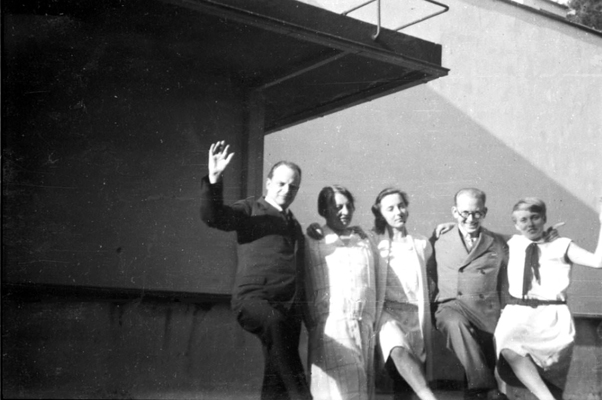
Paul and Lily Klee, Gret Palucca, Herbert Trantow, Karla Grosch, 1927. Photographer: Felix Klee. Zentrum Paul Klee, Bern © Klee Estate
Karla Grosch and Paul Klee, Stresemannallee, Dessau, April 1933, Photo: Franz (Boby) Aichinger © Zentrum Paul Klee, Bern, Bildarchiv
Karla Grosch, Sports School S. Deutsch, Berlin, 1928, unknown photographer. Zentrum Paul Klee, Bern, donation from the Klee family
Walter Gropius did choose only his personal timeline for the first international exhibition about the Bauhaus. The presentation and documentation at the MoMA in New York was teamwork with his wife Ise and old friend Herbert Bayer.
The catalogue cover by Bayer is based on a photo by Erich Consemüller. The performance »Das Gebäude als Bühne« by Oskar Schlemmer can be seen in front of the Bauhaus Dessau.
BAUHAUS WORKSHOPS
”
I have a childlike joy when I feel how I have my body in control, how I can make demands on it, how it gives in, how it functions, and I can lose myself completely in its performance possibilities.
”
Fräulein Grosch was a valuable member of the stage department headed by Professor Oscar Schlemmer. She rehearsed dances and movement studies and, thanks to her own artistic and dance skills, was able to carry out independent tasks in various individual and group performances.
From Mies van der Rohe's work reference, 1932
The Bauhaus was a school. Many authors, after mentioning this fact, tend to forget it. When so many trees are counted, the forest disappears. You talk endlessly about people, their works, their ancestors and descendants, you show the inevitable concentric scheme of the course, but you are very discreet about the institution. [...] It looks as if one is reluctant to accept the common and unimportant details of the life of an educational institution. This behavior reinforces the idea that there is a piece of miracle at the Bauhaus.
From: »What one knows, believes to know and ignores about the bauhaus.« Claude Schnaidt, the Swiss architect and student of Max Bill, written for the 1st Bauhaus Colloquium in Weimar, 1976.
Paul Klee was active at the Bauhaus as a lecturer – called master – between 1921 and 1931 beside Wassily Kandinsky, Lothar Schreyer or Oskar Schlemmer. During this time Klee wrote lecture notes on Pictorial Formation and made around 3,900 pages of teaching notes, which he described in its entirety as Teaching Notes on Pictorial Creation. He did not teach emerging artists, but as he said himself »creators, working practitioners«. Like Walter Gropius he was convinced that art itself cannot be taught, but can only arise through intuition. The aim of his teaching was to convey to the students the fundamental principles of pictorial creation.
Great exhibition catalogue and overview about the artist and his works by Zentrum Paul Klee Bern. Download via Fondacion Juan March
The determination of pure red is more difficult than the determination of the other two colored elements. Thus, since pure blue and pure yellow are more solid than pure red, pure red is set up in such a way that it is a good violet with pure blue on the one hand and a good green with pure yellow on the other hand. Then a lot has already been won.
”
Teaching notes on Pictorial Creation
more to see on my blog

more to see on facebook








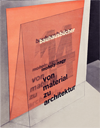

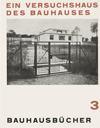


Paul Klee, 1911. Photo: Alexander Eliasberg. Source: wikipedia
last will 1933
burn me, but don't demand the ashes back!
the slag piety is half a thing; get rid of it!
don't wear mourning either! it would be nice if all my friends of the present and past would come together a little later for a bauhaus-style party - drinking, laughing, loving.
then i'll certainly join in - more than in life!
it's more fertile than eulogies! love is the key!!
Ise, whom I have loved the most, please order
and administer my spiritual estate, as far as material things exist, act according to your judgement! think of Ati, whom I love! (june 1948)
walter gropius
1926 1927
1928
1929
1931
BAUHAUS SOURCES FOR DOWNLOAD
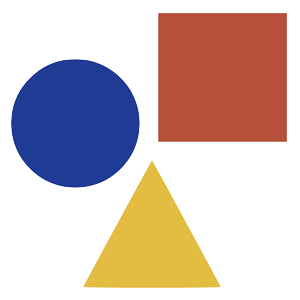
Das neue Frankfurt, 12.12.1930. Source: Heidelberg University
László Moholy-Nagy, leaflet for Bauhaus Dessau, 1925-1928. ©The Moholy-Nagy Foundation
Source: Das Werk 55. 1968.
I intend to leave my previous sphere of activity and to develop my strengths in a field of work that is not restricted by official duties and considerations. The Bauhaus, which I founded nine years ago, is now firmly established, which is expressed in the increasing recognition of the institute and the growing rush of students. [...] The current head of the construction department, Hannes Meyer, has been proposed by me and the Bauhaus Master Council as successor. [...]
He received a prize at the competition for the League of Nations Palace in Geneva. He also became known for his works in the field of free art and modern theatre, as well as for various publications. In the spring of 1927 he followed the call to the Bauhaus.
Walter Gropius in his press release, 05.02.1928
Das neue Frankfurt 2/1928. Source: University of Heidelberg
Because Hannes Meyer (1889-1954) stood by a group of students side who supported striking miners, he was dismissed at the instigation of the Lord Mayor of Dessau, Fritz Hesse.
With seven Bauhaus students he moved to the Soviet Union to tackle large construction projects, which, however, were not realized within Stalin's sphere of influence - the dictator preferred palaces in the style of the Lomonossov University in Moscow. In 1936 Meyer returned to Switzerland, where in 1939 he built the children's home in Mümliswil for a former patron; it remained the only commission. From 1939 to 1949 he tried his luck in Mexico, where success was also lacking. Back in Switzerland, the effects of the Cold War hit him, and he was not welcome in the GDR either. Meyer worked in his wife's studio, the weaver Lena Meyer-Bergner, a former Bauhaus student, and died in Lugano in 1954. It was only many years later that his work as an architect was rediscovered and appreciated.
Source Thomas Huonker: A former orphanage pupil and Bauhaus director is building a children's home.
”
BAUHAUS
PRODUCT TYPOLOGY
MORE TO SEE ON MY BLOG
MORE TO SEE ON FACEBOOK
whether wallpaper,
whether fabric: bauhaus 33!
bauhaus wallpapers and bauhaus fabrics are signposts of good taste. they fit into any home, are discreetly patterned and enlivened by friendly and harmonious shades. quality and value for money unsurpassed.
wallpaper factory rasch, bramsche and baumgärtel, vogtland
STAINED GLASS
Form master:
Paul Klee
Technical direction: Josef Albers
”
BAUHAUS SOURCES FOR DOWNLOAD
bauhaus
bookshelf
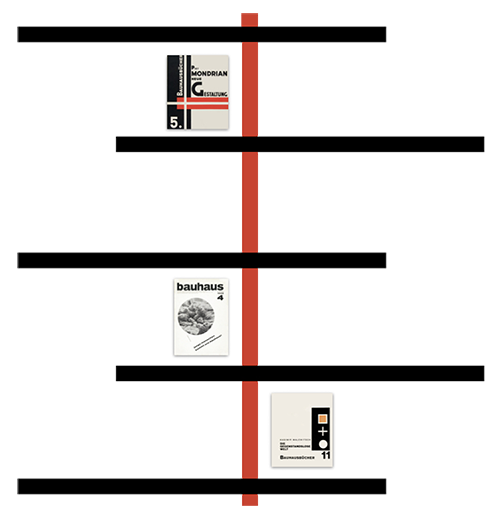
Throw, sample, 1927. Cotton and wool. Misawa Homes Bauhaus Collection
downloads may only be used for private purposes
